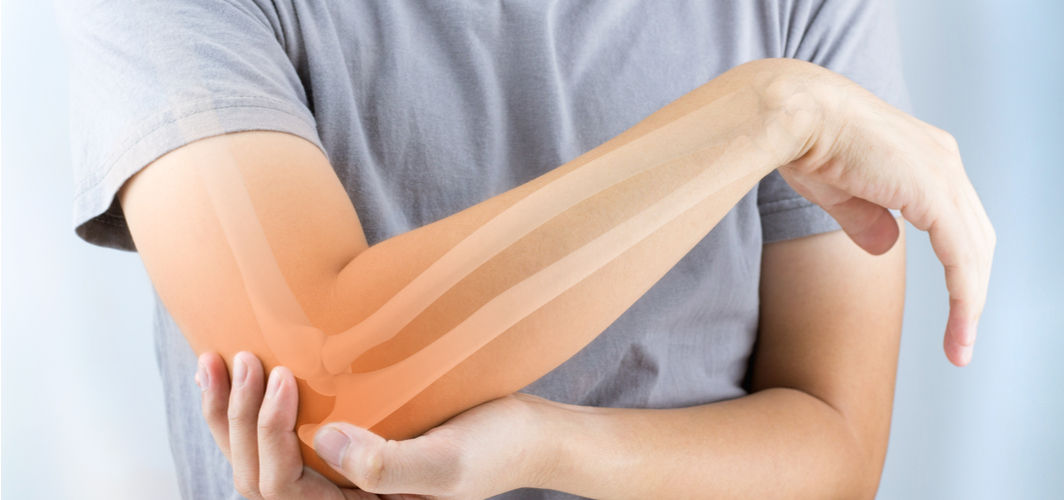Orthopedic Conditions
Understanding Hairline Fractures and How to Get Relief
5 min read
By Apollo 24/7, Published on - 22 October 2021, Updated on - 15 May 2023
Share this article
0
35 likes

The human bones are made up of collagen and calcium phosphate. While the collagen gives flexibility to the bones, the calcium makes them hard and rigid. Research shows that the thigh bone (femur) can bear up to 400 kilograms of sustained weight without breaking. However, when the weight or the intensity of an external force exceeds the stress-bearing capacity of the bone, fracture occurs.
The severity of the fracture depends on the intensity of the causative force. For instance, a low blow may cause a hairline fracture, whereas a major accident can shatter the bone completely. While an open or displaced bone fracture can be seen with the naked eye, hairline fractures, also called stress fractures, can be difficult to spot without proper imaging tests.
What are the different types of fractures?
Based on the severity of bone damage, fractures are categorised as :
- Closed fractures: The bone is broken but the skin is intact.
- Open or compound fractures: The skin is injured or pierced along with the broken bone.
- Complete fractures: The fracture line goes through the bone completely, separating it into two halves.
- Displaced fractures: The bone breaks into two while forming a gap in the middle.
- Stress or hairline fractures: There is a small crack in the bone.
Depending on the pattern of fracture, it can be divided into:
- Transverse fracture: The fracture line is horizontal to the bone.
- Oblique fracture: The fracture goes diagonally across the bone.
- Spiral or torsion fracture: The fracture occurs due to rotational force on the bone resulting in a fracture that encircles the entire bone.
- Comminuted fracture: The bone is broken into three or more pieces.
What are the signs of hairline fracture?
Some of the common signs of hairline fracture include:
- Pain and swelling at the site of fracture that does not resolve for weeks
- Tender on touch
- Pain increases on performing an activity or putting weight on the injured part
- Pain may or may not resolve on taking rest
What causes hairline fracture?
Bones can adapt to the sustainably increased forces, through the process of remodelling. In this process, there is a breakdown of the old bone, which gets replaced by a new one. However, when the breakdown of the bone happens more rapidly than the production of the new bone, the chances of getting a hairline fracture increase.
Hairline fractures often occur due to repetitive actions or overuse of the bone over time. Some of the common causes of hairline fractures include:
- Practising repetitive high-impact activities such as long-distance running, gymnastics, basketball, or tennis
- Having an incorrect technique while playing a sport
- Sudden change in the duration or frequency of activity without taking a break-in period
- Improper gear or footwear
Who is at increased risk of suffering from a hairline fracture?
Anyone can suffer from hairline fractures. However, factors that may increase the risk include:
- Old age: Due to physiological changes, the bones of older adults become fragile, increasing their risk of fractures.
- Gender: Women suffering from irregular or no menstrual cycles (amenorrhea) are at increased risk for bone fractures as it affects their bone density significantly.
- Unhealthy weight: Both underweight and overweight people seem to be at risk for stress injuries. While underweight people could have weak bones, obese people experience continuous stress on the bones due to extra weight.
- Anatomical factors: Some people have anatomical issues such as low or high foot arches, bunions, and tendonitis, which puts them at risk for stress injuries.
- Bone diseases: Conditions such as osteoporosis reduce the density and strength of the bone, making it weak and prone to fractures.
- Poor nutrition: Lack of proper nutrients such as vitamin D and calcium in the body can result in low bone density, thereby increasing the risk of stress fractures.
Recommended Read: FAQs on Vitamin D, the Sunshine Vitamin
How are hairline fractures treated?
The doctors may recommend an X-ray, MRI scan or a nuclear bone scan to interpret the location and intensity of the fracture. The treatment of hairline fractures include:
- Avoiding high-impact activities or sport.
- Resting the injured part.
- Icing the affected part to reduce the swelling.
- Keeping the weight off the injured part.
- Practising non-weight bearing activities such as swimming after consulting the doctor.
- Taking over-the-counter available painkillers such as paracetamol and ibuprofen to relieve pain.
Depending on the intensity of the fracture, the doctor may recommend a cast, splint, or brace to aid the healing. Vitamin D and calcium supplements may also be prescribed to improve bone strength.
Conclusion
Hairline fractures can occur due to repetitive actions that put stress on the bones. Stress fractures are most commonly seen in the bones of the foot (metatarsals), heel, ankle and navicular (a bone present on the top of the middle of the foot). The three most common signs of a hairline fracture include pain, swelling, and loss of function. Hairline fractures usually heal on their own as soon as the stress is taken off the bone. Consuming a nutritious diet rich in calcium, using high-quality exercise equipment, gradually increasing the intensity or duration of any exercise, and using sole supporting footwear can help reduce the risk of hairline fractures.
For any fracture-related queries, you can speak to an orthopedician.
Orthopedic Conditions
Leave Comment
Recommended for you

Orthopedic Conditions
Frozen Shoulder: Signs, Diagnosis & Treatment
Discover the causes, symptoms, and treatment options for a frozen shoulder. Learn how to manage this condition and regain full control of your shoulder.

Orthopedic Conditions
Gout: Causes, Diagnosis, and Management of This Severe Form of Arthritis
Gout is a complex form of inflammatory arthritis accompanied by sharp pain, redness, swelling, and stiffness in the joints.

Orthopedic Conditions
What Is Osteopenia How Can It Be Prevented?
Osteopenia is a medical condition where a person loses bone mineral mass, but the loss is not as low to be classified as osteoporosis.
Subscribe
Sign up for our free Health Library Daily Newsletter
Get doctor-approved health tips, news, and more.
Visual Stories

Natural Ways to Get Relief from Arthritis
Tap to continue exploring
Recommended for you

Orthopedic Conditions
Frozen Shoulder: Signs, Diagnosis & Treatment
Discover the causes, symptoms, and treatment options for a frozen shoulder. Learn how to manage this condition and regain full control of your shoulder.

Orthopedic Conditions
Gout: Causes, Diagnosis, and Management of This Severe Form of Arthritis
Gout is a complex form of inflammatory arthritis accompanied by sharp pain, redness, swelling, and stiffness in the joints.

Orthopedic Conditions
What Is Osteopenia How Can It Be Prevented?
Osteopenia is a medical condition where a person loses bone mineral mass, but the loss is not as low to be classified as osteoporosis.